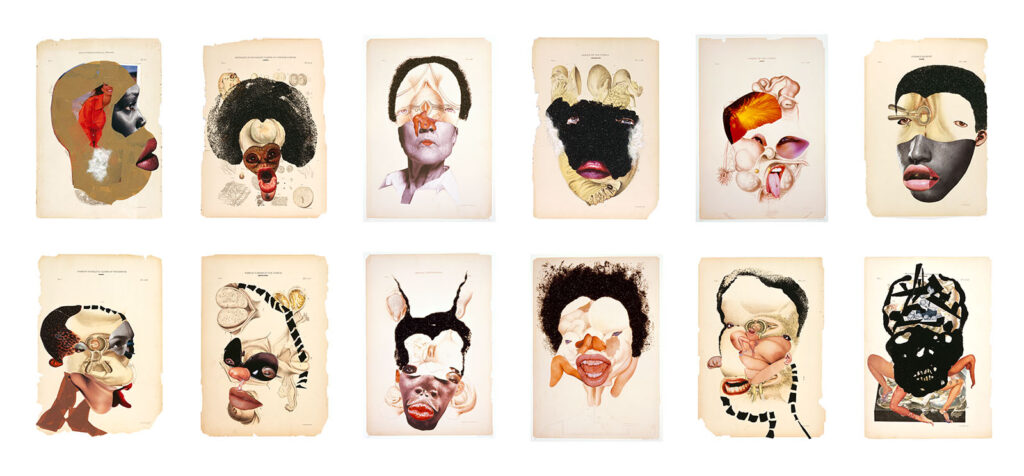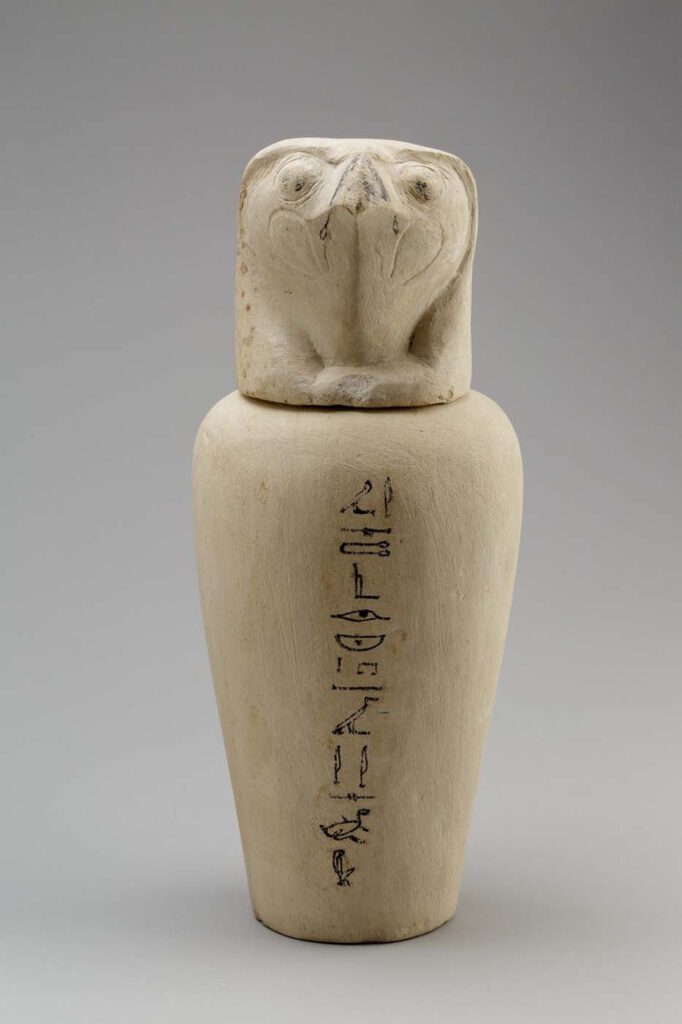Wangechi Mutu, Histology of the Different Classes of Uterine Tumors (12 works) (2004–05)

Wangechi Mutu, Histology of the Different Classes of Uterine Tumors (12 works) (2004–05) Series of twelve collages on found printed medical illustrations, including printed paper, glitter, ink, adhesive tape and fur. © Wangechi Mutu. Courtesy of the artist – Wangechi Mutu works expansively across sculpture, film, collage, performance, drawing, and painting. In dialogue with Afrofuturism, […]
Nkisi power figure: “Mavungu”

Nkisi power figure: ‘Mavungu’ Held in the Pitt Rivers Museum, Oxford. 1900.39.70. Figure carved of wood and painted, studded with iron nails and implements; a ‘power figure’. [JC 27/9/2001] – Kongo nkisi: nkisi are controversially known as “nail fetishes” and famously trouble the Western concept of “animism” and African religion. The concept of the fetish […]
Canopic Jar Representing the Deity Qebehsenuef

Canopic Jar Representing the Deity Qebehsenuef Photo: Metropolitan Museum of Art – During mummification, the internal organs (excluding the heart, which was generally left in place) were taken out of the body and placed in special containers known in Egyptology as canopic jars. Traditionally, the four canopic jars were connected to four mythological figures known […]
